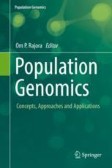Search
Search Results
-
circTADA2As suppress breast cancer progression and metastasis via targeting miR-203a-3p/SOCS3 axis
More and more evidence indicates that circular RNAs (circRNAs) have important roles in several diseases, especially in cancers. However, their...

-
Circular RNAs are abundantly expressed and upregulated during repair of the damaged endometrium by Wharton’s jelly-derived mesenchymal stem cells
BackgroundWharton’s jelly-derived mesenchymal stem cells (WJ-MSCs) exhibit strong and powerful potential in repairing different diseases. The...

-
Noncoding RNAs Databases: Current Status and Trends
One of the most important resources for researchers of noncoding RNAs is the information available in public databases spread over the internet....
-
MiR-190a potentially ameliorates postoperative cognitive dysfunction by regulating Tiam1
BackgroundPostoperative cognitive dysfunction (POCD) affects a large number of post-surgery patients, especially for the elderly. However, the...

-
CiRS-7 promotes growth and metastasis of esophageal squamous cell carcinoma via regulation of miR-7/HOXB13
The circular RNA ciRS-7 has been reported to be involved in the pathogenesis of various tumors, including gastric and colorectal cancer. However, the...

-
miRspongeR: an R/Bioconductor package for the identification and analysis of miRNA sponge interaction networks and modules
BackgroundA microRNA (miRNA) sponge is an RNA molecule with multiple tandem miRNA response elements that can sequester miRNAs from their target...

-
Arena-Idb: a platform to build human non-coding RNA interaction networks
BackgroundHigh throughput technologies have provided the scientific community an unprecedented opportunity for large-scale analysis of genomes....

-
Cancer metabolism and tumor microenvironment: fostering each other?
The changes associated with malignancy are not only in cancer cells but also in environment in which cancer cells live. Metabolic reprogramming...
-
Infrastructures of systems biology that facilitate functional genomic study in rice
Rice ( Oryza sativa L.) is both a major staple food for the worldwide population and a model crop plant for studying the mode of action of...

-
circHECTD1 promotes the silica-induced pulmonary endothelial–mesenchymal transition via HECTD1
Excessive proliferation and migration of fibroblasts contribute to pulmonary fibrosis in silicosis, and both epithelial cells and endothelial cells...

-
Circular RNA expression profiles and features in human tissues: a study using RNA-seq data
BackgroundCircular RNA (circRNA) is one type of noncoding RNA that forms a covalently closed continuous loop. Similar to long noncoding RNA (lncRNA),...

-
Population Epigenomics: Advancing Understanding of Phenotypic Plasticity, Acclimation, Adaptation and Diseases
Advances in chromatin state map**, high-throughput DNA sequencing, and bioinformatics have revolutionized the study and interpretability of...
-
Towards precise reconstruction of gene regulatory networks by data integration
BackgroundMore and more high-throughput datasets are available from multiple levels of measuring gene regulations. The reverse engineering of gene...

-
miRNAs target databases: developmental methods and target identification techniques with functional annotations
PurposemicroRNA (miRNA) regulates diverse biological mechanisms and metabolisms in plants and animals. Thus, the discoveries of miRNA has...

-
Searching for convergent pathways in autism spectrum disorders: insights from human brain transcriptome studies
Autism spectrum disorder (ASD) is one of the most heritable neuropsychiatric conditions. The complex genetic landscape of the disorder includes both...

-
Applications of integrative OMICs approaches to gene regulation studies
BackgroundFunctional genomics employs dozens of OMICs technologies to explore the functions of DNA, RNA and protein regulators in gene regulation...

-
Functions of noncoding sequences in mammalian genomes
Most of the mammalian genome consists of nucleotide sequences not coding for proteins. Exons of genes make up only 3% of the human genome, while the...
